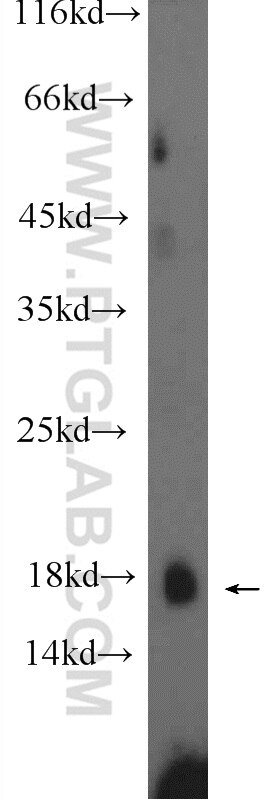Tested Applications
| Positive WB detected in | HepG2 cells |
| Positive IF/ICC detected in | HepG2 cells |
Recommended dilution
| Application | Dilution |
|---|---|
| Western Blot (WB) | WB : 1:200-1:1000 |
| Immunofluorescence (IF)/ICC | IF/ICC : 1:20-1:200 |
| It is recommended that this reagent should be titrated in each testing system to obtain optimal results. | |
| Sample-dependent, Check data in validation data gallery. | |
Product Information
21460-1-AP targets PRH1 in WB, IF/ICC, ELISA applications and shows reactivity with human samples.
| Tested Reactivity | human |
| Host / Isotype | Rabbit / IgG |
| Class | Polyclonal |
| Type | Antibody |
| Immunogen |
CatNo: Ag14833 Product name: Recombinant human PRH1 protein Source: e coli.-derived, PET28a Tag: 6*His Domain: 17-187 aa of BC064553 Sequence: QDLNEDVSQEDVPLVISDGGDSEQFLDEERQGPPLGGQQSQPSAGDGNQDDGPQQGPPQQGGQQQQGPPPPQGKPQGPPQQGGQQQQGPPPPQGKPQGPPQQGGHPPPPQGRPQGPPQQGGHPRPPRGRPQGPPQQGGHQQGPPPPPPGKPQGPPPQGGRPQGPPQGQSPQ Predict reactive species |
| Full Name | proline-rich protein HaeIII subfamily 1 |
| Calculated Molecular Weight | 17 kDa |
| Observed Molecular Weight | 17 kDa |
| GenBank Accession Number | BC064553 |
| Gene Symbol | PRH1 |
| Gene ID (NCBI) | 5554 |
| RRID | AB_2878862 |
| Conjugate | Unconjugated |
| Form | Liquid |
| Purification Method | Antigen affinity purification |
| UNIPROT ID | P02810 |
| Storage Buffer | PBS with 0.02% sodium azide and 50% glycerol, pH 7.3. |
| Storage Conditions | Store at -20°C. Stable for one year after shipment. Aliquoting is unnecessary for -20oC storage. 20ul sizes contain 0.1% BSA. |
Background Information
PRH1, also known as Salivary acidic proline-rich phosphoprotein 1/2, is a 166 amino acid secreted protein whose molecular weight is 17 kDa. It functions as a highly potent inhibitor of calcium phosphate crystal growth. Similar to other PRPs, PRH1 provides a protective and reparative environment for dental enamel, which is important for teeth integrity. This antibody specifically recognises the 17 kDa protein.
Protocols
| Product Specific Protocols | |
|---|---|
| IF protocol for PRH1 antibody 21460-1-AP | Download protocol |
| WB protocol for PRH1 antibody 21460-1-AP | Download protocol |
| Standard Protocols | |
|---|---|
| Click here to view our Standard Protocols |






